Test of stitched cuir bouilli
09 Jan 2023 - mvj
Even with my previous tests of cuir bouilli, I still have many many questions for details of the process that I should ideally figure out before pouring boiling water over a fully sewn quiver.
Questions such as…
- How fast will the process be with the leather I’m actually intending to use for the project? (My initial tests were on scrap pieces from Slöjddetaljer in Stockholm, and they impregnate their vegetable tan leather making anything relating to wet forming much slower)
- How much will the leather shrink?
- Should I stitch it up before boiling - how will the leather react to the stitches when it shrinks and moulds with the hot water?
- How will the waxed cord react to boiling? Is there anything I should be wary of there?
So, once I got my hands on the piece of leather I had ordered to work with, I cut off a thin sliver - about 1 cm (just under 1/2”) wide and maybe 1 dm long (around 4”). This wrapped neatly around a thimble included in my leather sewing kit, so I cut the edges straight, bevelled the long edges and carved a stitch groove along the short edges. Quick run with a spacer wheel and then 5 stabs with an awl and I’m in business.
Saddle-stitch with some waxed thread got me to this cute little leather ring:
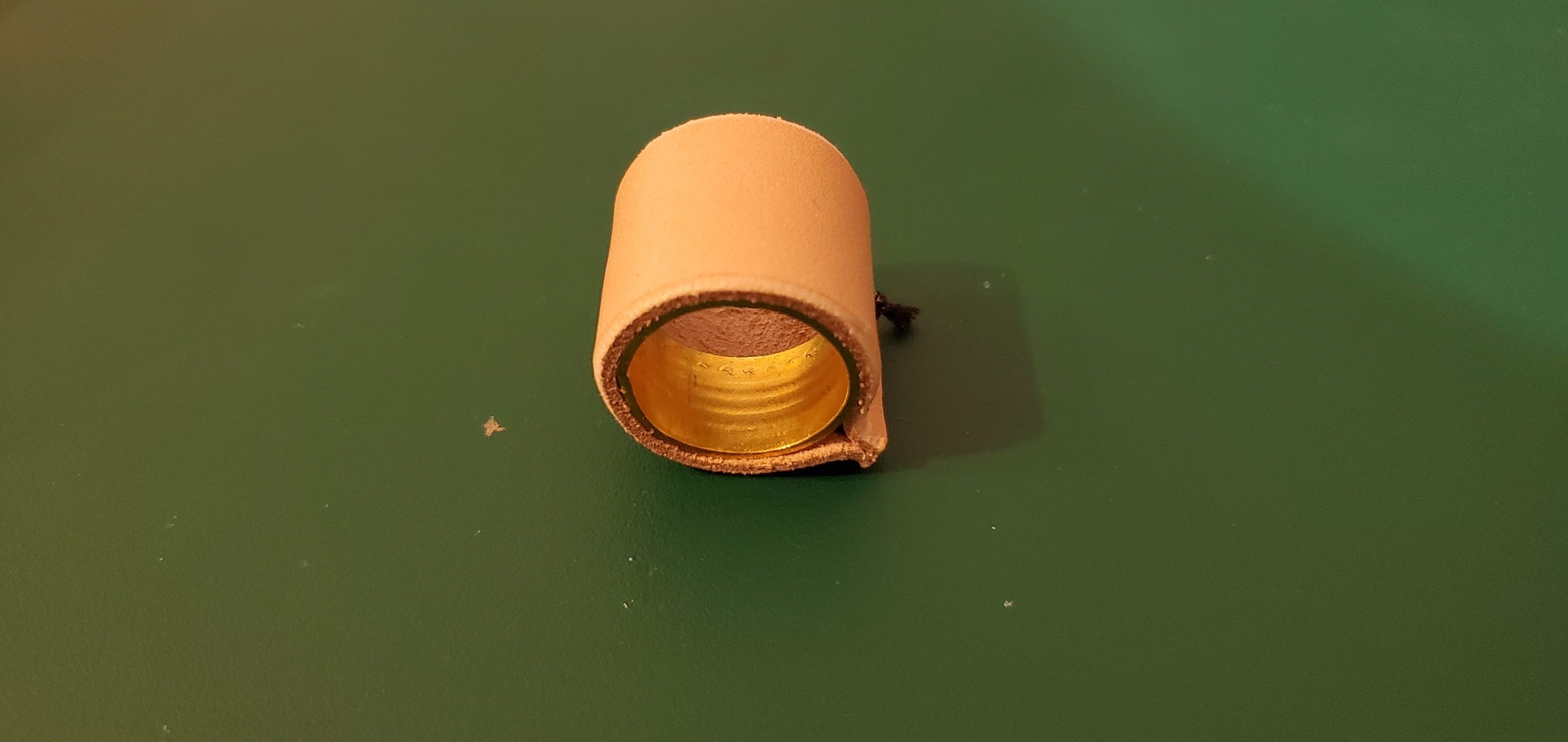
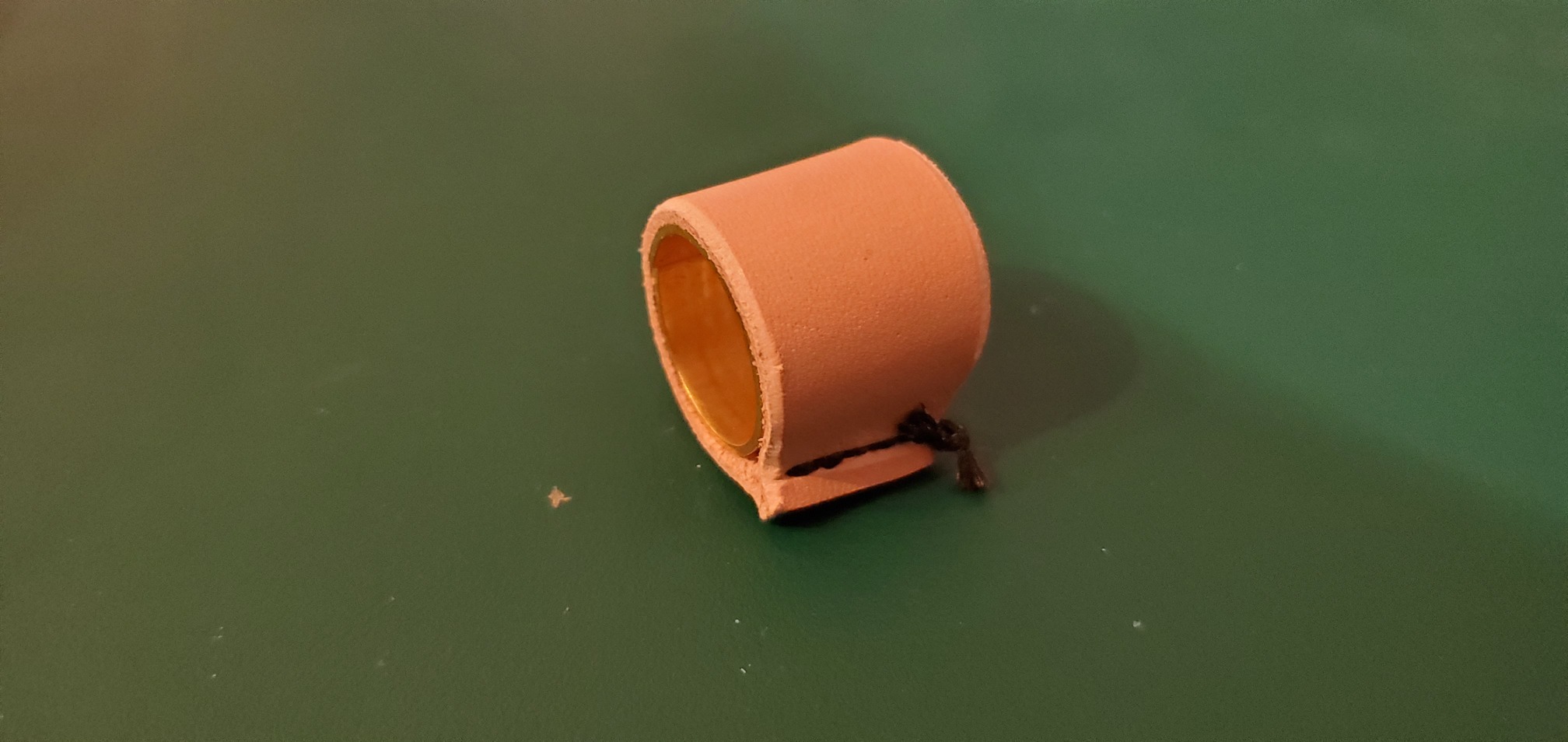
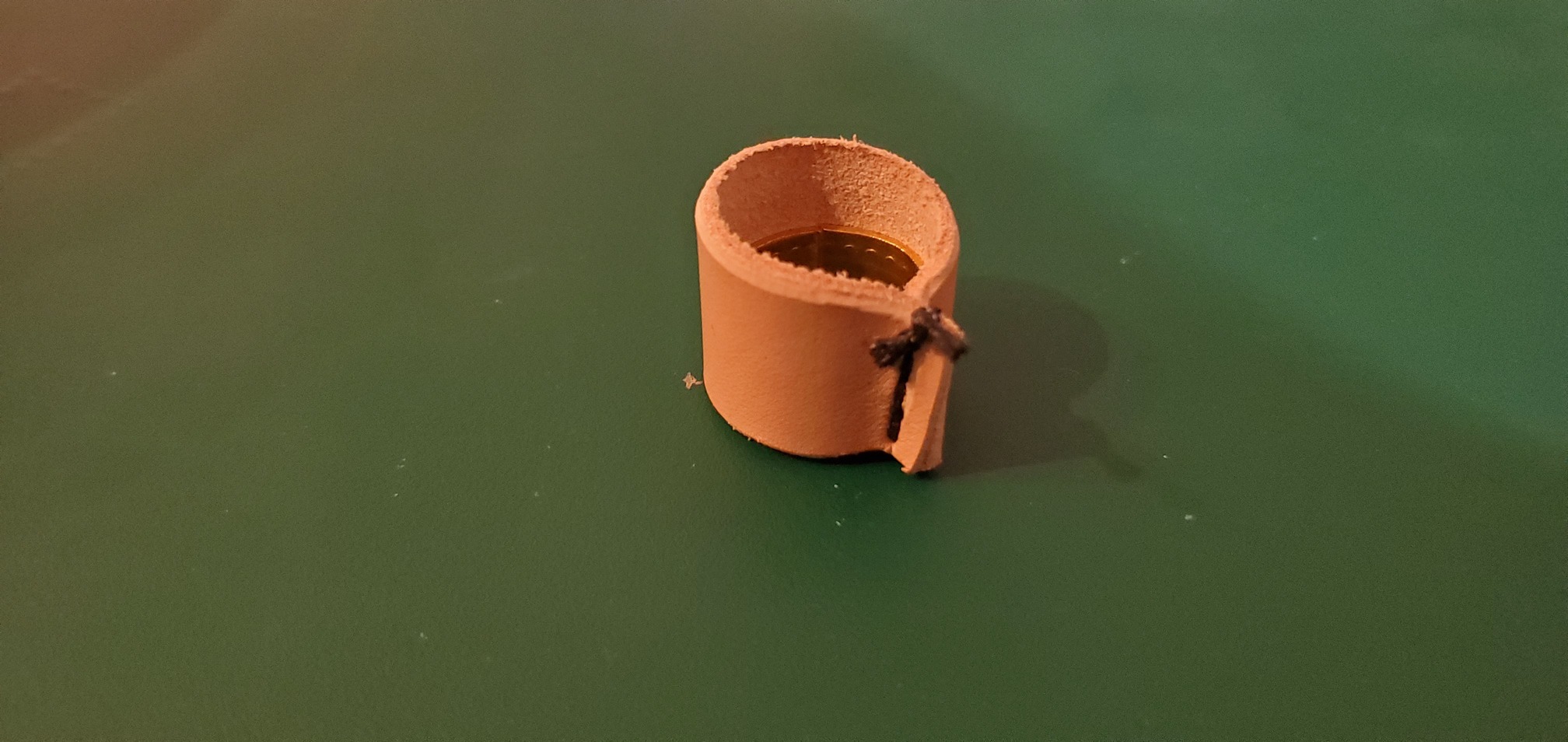
Next, we pre-soak the leather in cool water so that the boiling step only really heats the leather. This should, according to my reading, make for a more evenly heated result.
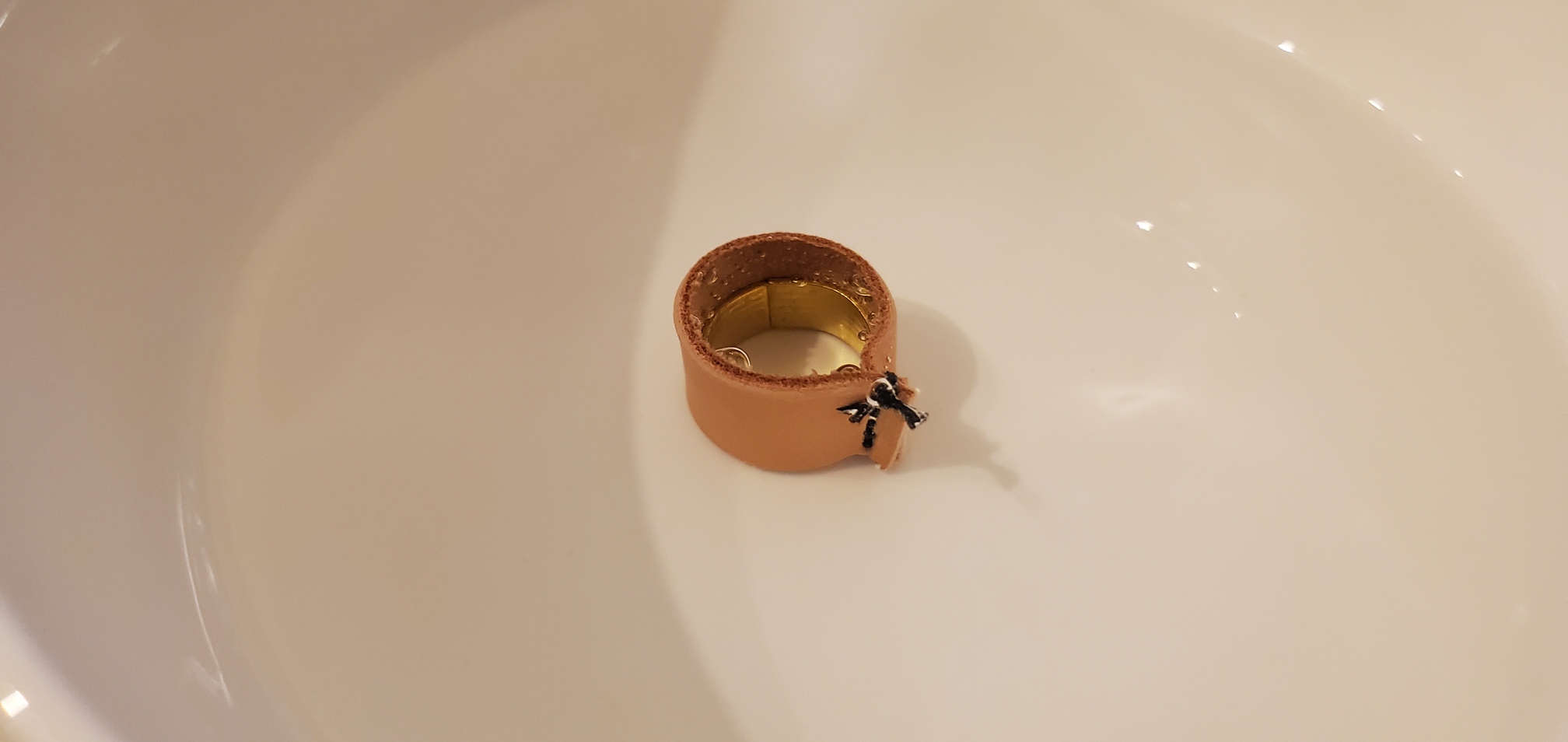
After the bubbling has stopped from the leather soaking, we move the ring (and thimble) to a new bowl and pour water straight out of a boiling electric kettle over the leather, enough to cover it. A slow count to 20 (to approximate 20 seconds) and then the leather looked plenty dark enough to pull out.
Then Letting it rest on a napkin while it dries over night.
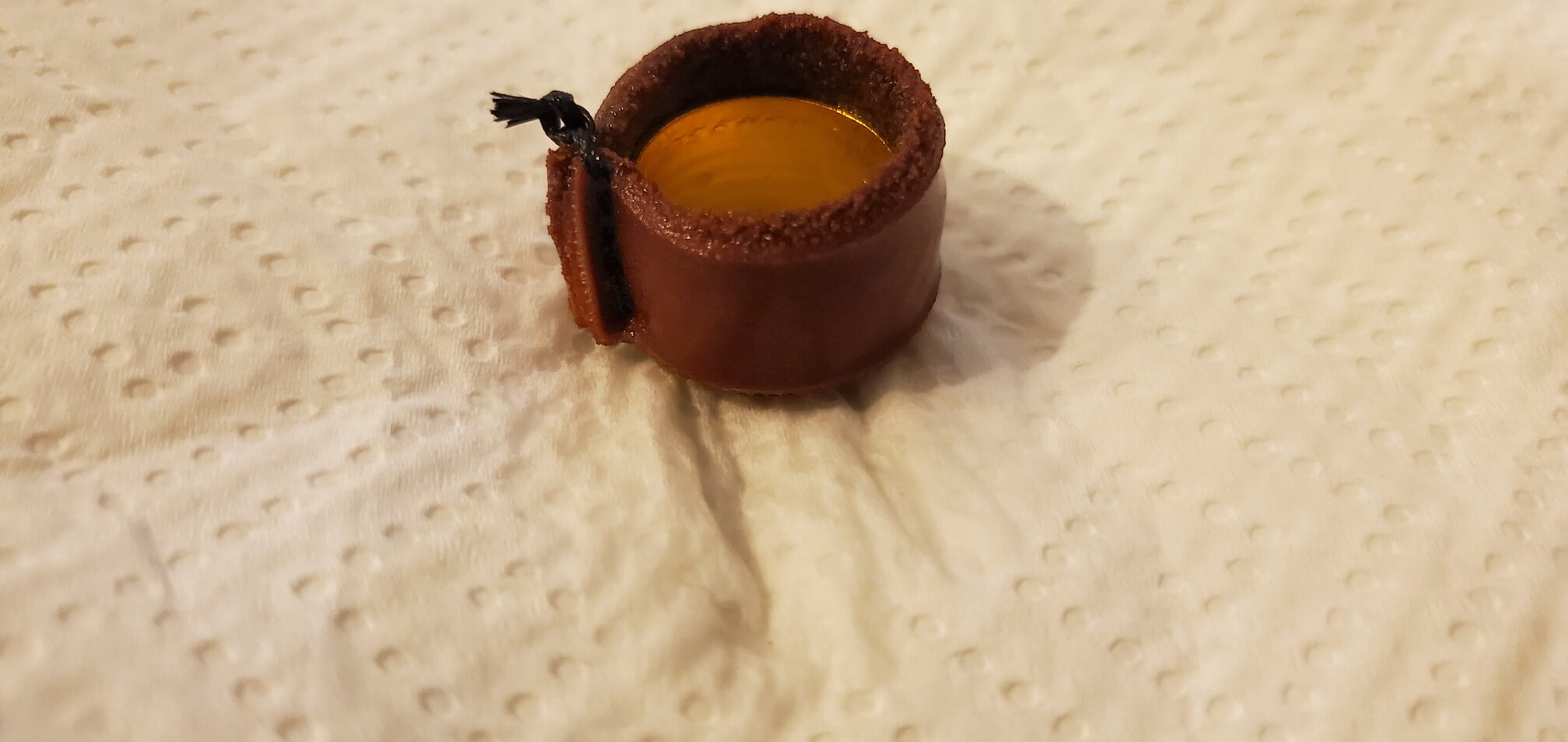
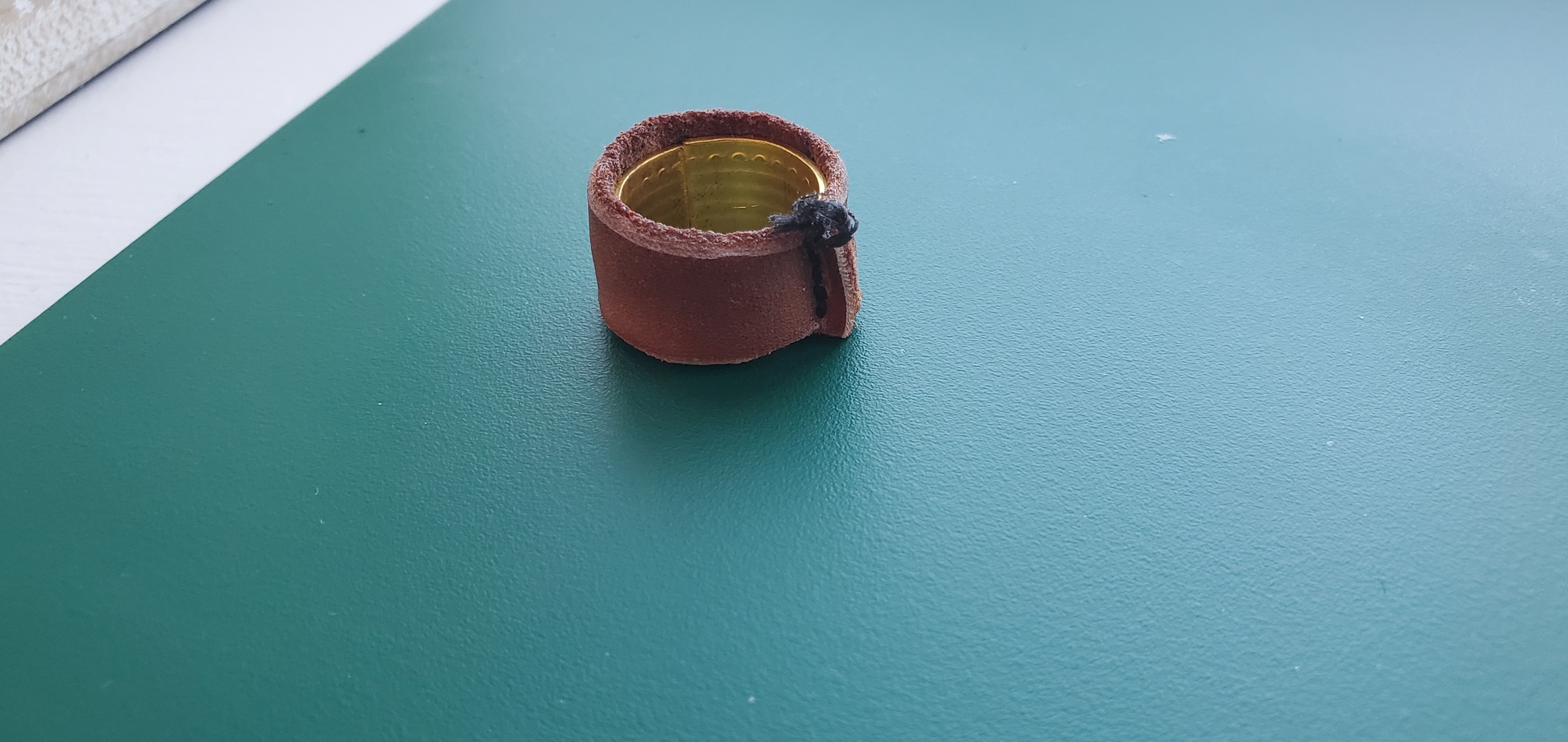
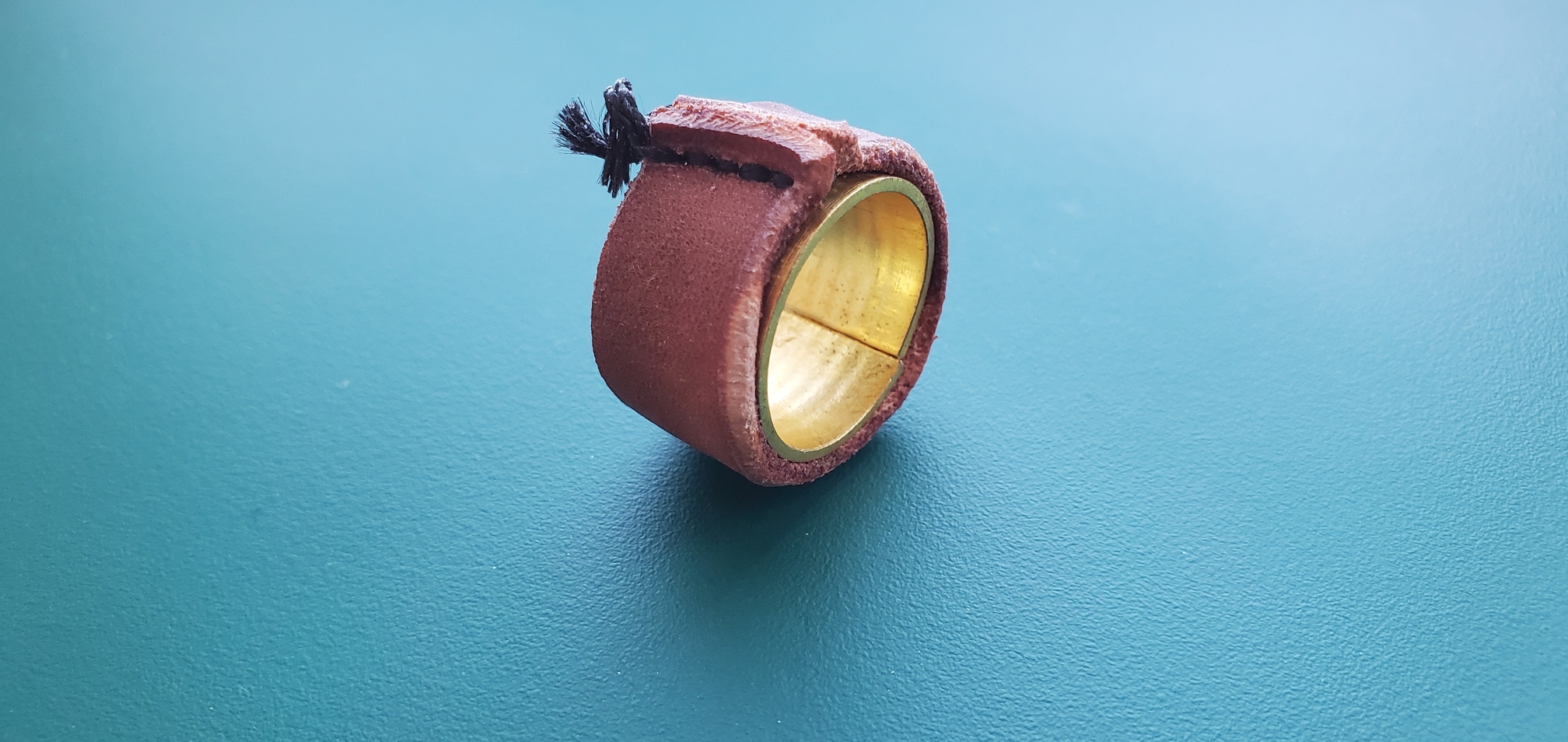
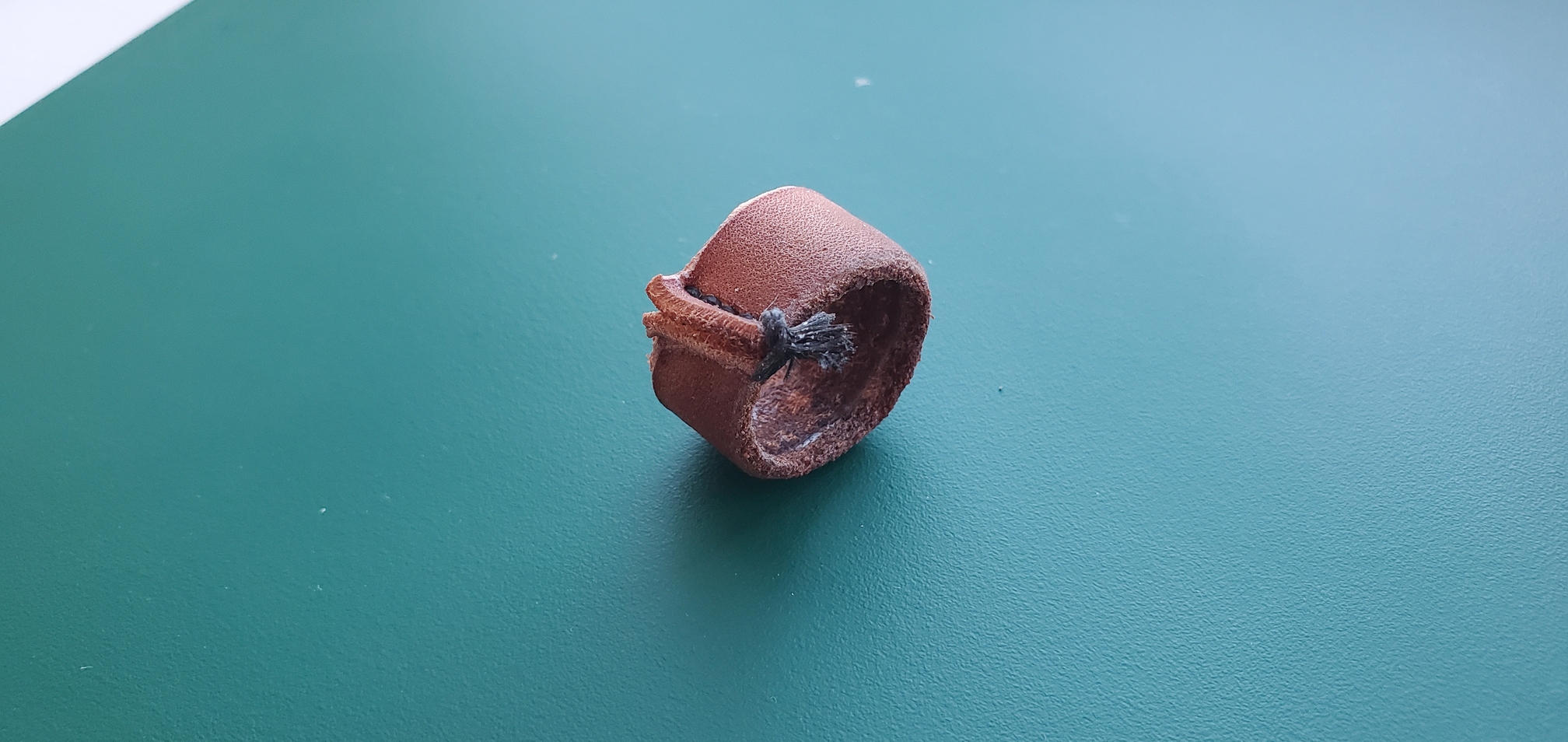
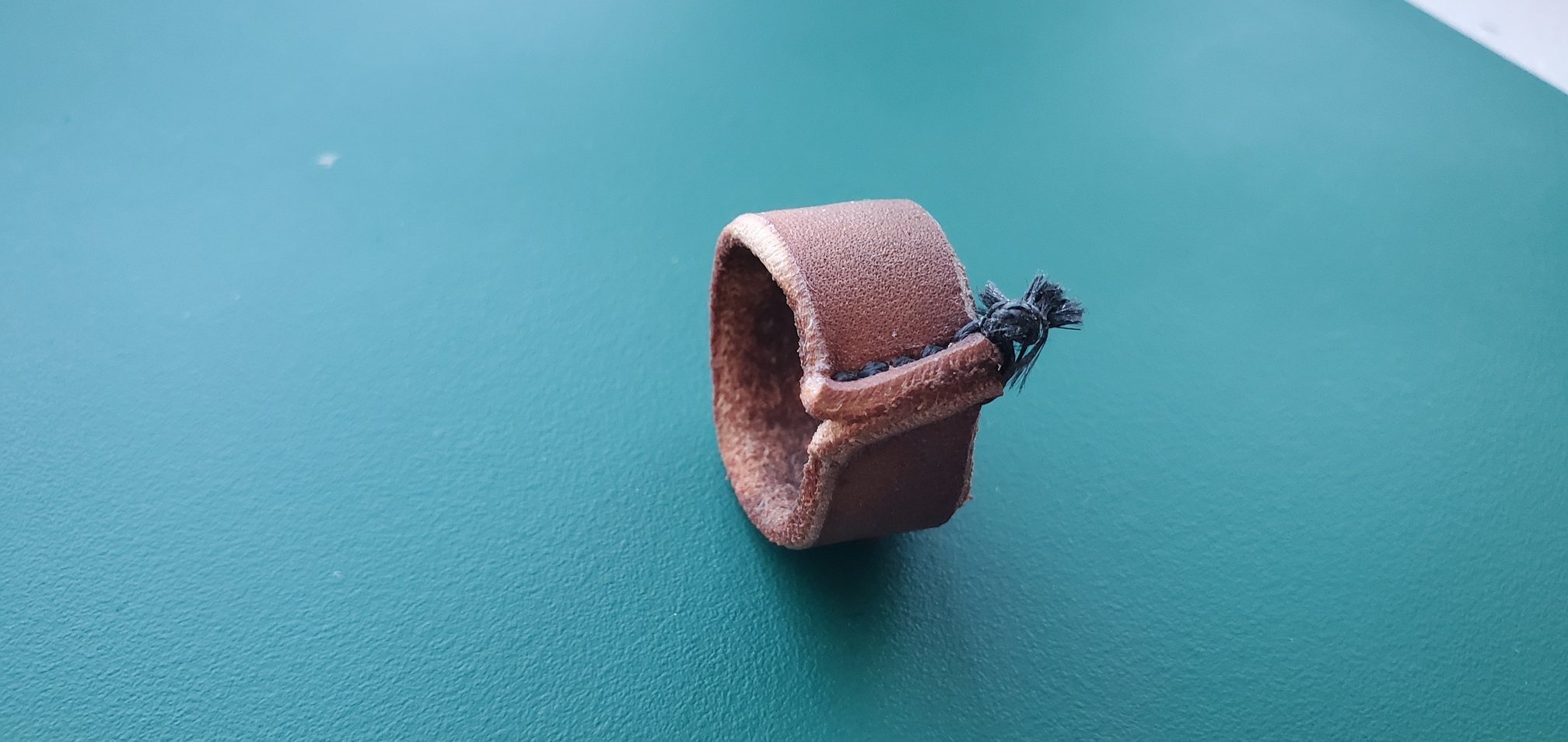
The resulting leather ring is hard, with a wooden sound when I tap it against the table. It does not yield much to pressing it together, but also does not crack or collapse under the pressure of my fingers. When pressing relatively hard, the ring flexes up to about 5mm or so, but quickly goes back to the moulded shape when released.
The waxed thread seems to have made it through the process quite well, and there are no signs of stress on the leather from the stitches. The original stitch was pretty close to the thimble surface, but had space enough to comfortably move the thimble in and out - while the boiled leather required some pushing to pop the thimble back out again. The suede surface on the inside is dimpled from the patterning on the thimble, and feels a bit rough,